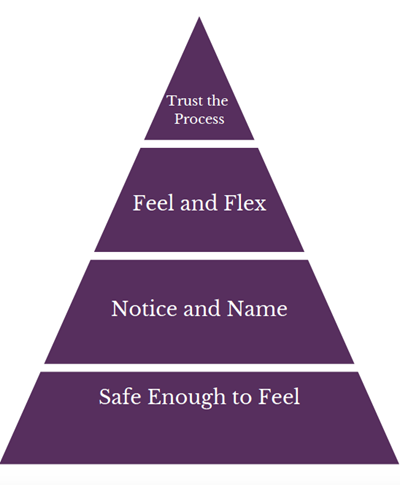Processing Trauma Memories: How Do I Know If My Client is Ready?
-
-
Rebecca Kase
How can we determine readiness for trauma processing? What skills and capacities need fostering in our traumatised clients before we take the next step? Rebecca Kase, leading EMDR consultant and author of a forthcoming book integrating Polyvagal Theory and EMDR, introduces the Preparation Hierarchy – a simple, neuro-informed framework that can help all therapists to pace, and prepare clients for, deep trauma work.

Master Attachment-Focused EMDR Online
As an EMDR trainer and consultant, I hear this question weekly. Evaluating when clients are ready to process their traumatic memories with EMDR or other trauma therapies can be daunting and confusing for many. None of us want to make things worse for clients. We all want to work at a pace that clients can handle and not make things worse, but finding the right time to integrate traumatic memories can be tricky. If you’re struggling with this, you’re not alone.
‘Remembrance and mourning’ is a crucial phase for trauma recovery. This phase of treatment, also known as reprocessing or integration, is where we help integrate experiences and reprocess memories to the point of adaptive resolution. But clients need to be ready for this phase. If we go too big too fast, we can overwhelm them and create distrust.
So, what skills do they need, and how can we determine if they’re ready?
In my new book, Polylvagal-Informed EMDR: A Neuro-Informed Approach to Healing, I introduce the Preparation Hierarchy. The Preparation Hierarchy is based on principles of Polyvagal Theory and resilience. This model outlines specific neurophysiological skills that collectively contribute to a resilient nervous system. The hierarchy supports clinicians in tailoring interventions to their client’s specific needs to facilitate successful trauma recovery that moves at the client’s pace.
The hierarchy outlines four skill sets:
1. safe enough to feel
2. notice and name
3. feel and flex
4. … and trust the process.
Each skill builds on the previous one in sequential order.

Safety is a crucial ingredient for healing, so ‘safe enough to feel’ is the foundation. This means safe enough in their life and body to explore feelings and sensations. This skill set also includes safety in the therapeutic relationship. A strong sense of safety is essential before undertaking more intensive trauma interventions.
The second skill set is 'notice and name'. This is the ability to notice feelings and sensations and put words to them. If your client struggles to identify feelings or body sensations, interventions must focus on building interoception and the ability to name their internal experience.
The next skill, 'feel and flex', focuses on the client’s ability to tolerate emotions and regulate their nervous system. This skill set requires some distress tolerance skills, along with self-regulation skills. While clients need not be able to self-regulate 100 per cent of the time (they probably wouldn’t be in your office if they could!), they need skills that work sometimes. Without these capabilities, clients can get stuck in intense emotional states or may resort to numbing out.
The final realm of the hierarchy is the outcome of previous skills: 'trust the process'. Trust is not a given. It is earned. Some clients don’t trust therapy, people, or their bodies. They learn to trust the process of healing through the therapeutic process.
Therapeutic interventions come in many forms, but knowing where your client falls on the hierarchy can make all the difference in delivering effective and targeted interventions. With the Preparation Hierarchy, you can determine if your client has the necessary skills to engage in deep trauma work or if they may need to focus on pacing interventions to build their neurophysiological capacity.
Keep in mind that healing is a process that takes time and dedication. Although there are no quick fixes, utilising the Preparation Hierarchy can help you demystify your clients’ readiness and stay attuned to their progress.